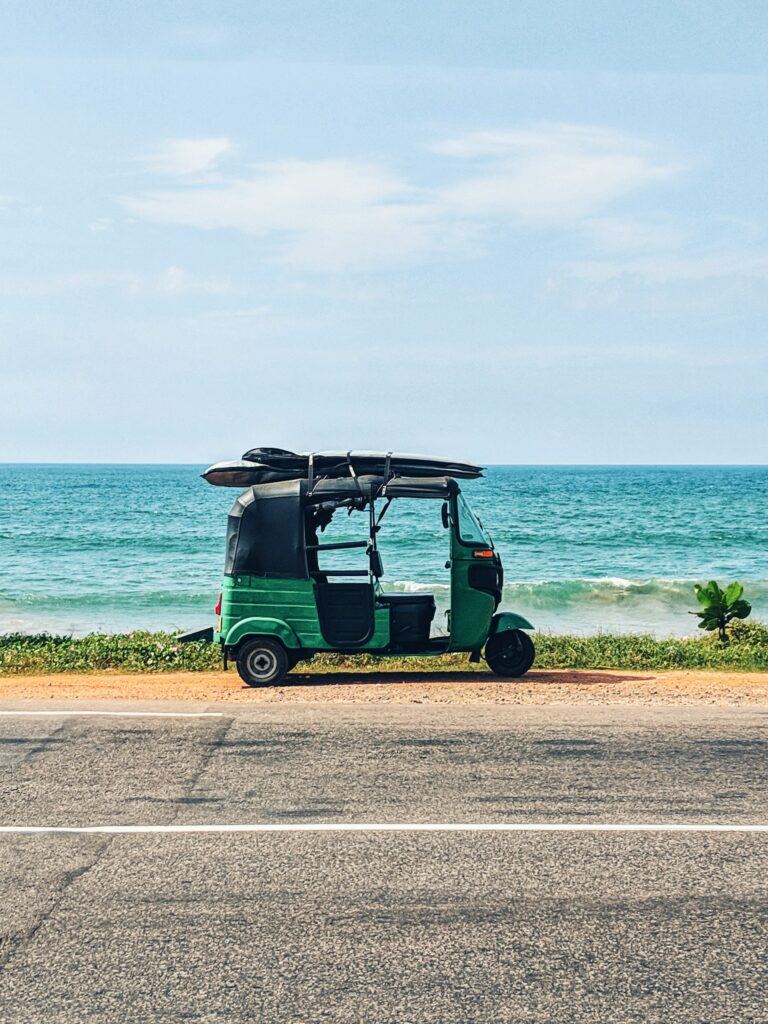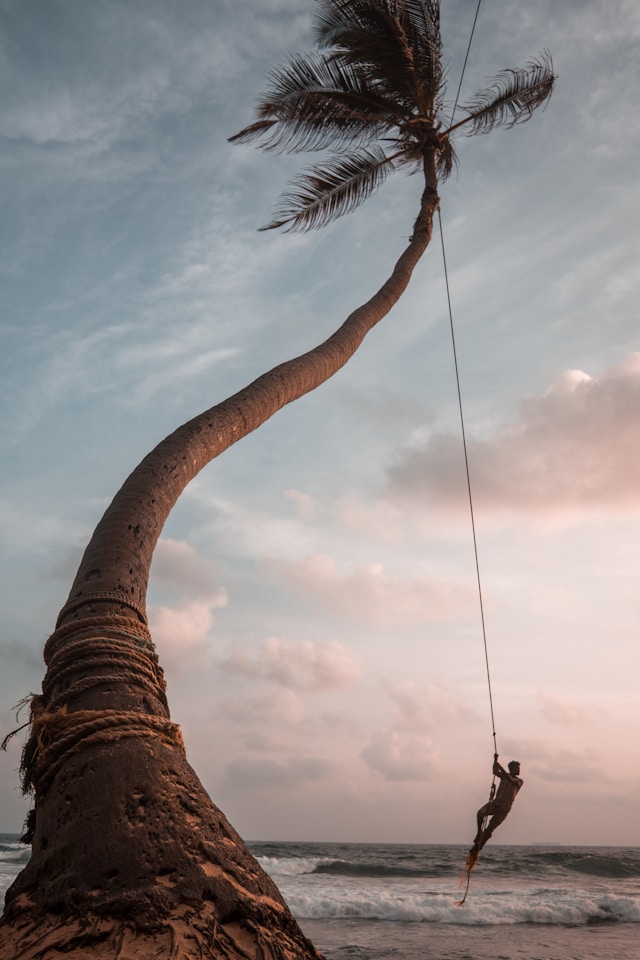Introduction to Elephant Watching in Sri Lanka
Sri Lanka, often heralded as the ‘Pearl of the Indian Ocean,’ is renowned for its vibrant biodiversity and lush landscapes. Among its most revered inhabitants is the majestic Asian elephant, a species that holds immense cultural and ecological significance. These gentle giants have been intricately woven into the fabric of Sri Lankan culture, symbolizing prosperity, wisdom, and strength. They are also pivotal to the country’s rich ecosystems, contributing significantly to the maintenance of forest pathways and seed dispersal.
As such, elephant watching in Sri Lanka has become a sought-after experience for both local and international tourists. This guide aims to navigate you through the best practices and locations for observing these magnificent creatures. We will explore some of the prime destinations for seeing elephants in their natural habitat, such as the renowned Udawalawe National Park, celebrated for its abundant elephant population, and the Minneriya National Park, famous for the spectacular ‘Elephant Gathering’ during the dry season. Moreover, the guide will shed light on ethical considerations to ensure your elephant encounters are both responsible and enriching.
In recent years, there has been a growing emphasis on eco-friendly elephant tours in Sri Lanka, promoting sustainable and humane interactions with wildlife. This guide will offer insights into the various elephant watching tours in Sri Lanka that prioritize the welfare of these magnificent animals, highlighting options that avoid exploitative practices. Additionally, we will delve into the role of elephant orphanages in Sri Lanka, institutions dedicated to the rescue and rehabilitation of injured or displaced elephants.
Whether you’re embarking on a Sri Lankan wildlife safari or seeking a serene connection with nature, understanding the importance of preserving and respecting these majestic creatures is paramount. Join us as we journey through the best places to see elephants in Sri Lanka, ensuring a memorable and responsible adventure.
Best National Parks to See Elephants
Sri Lanka is renowned for its rich biodiversity, and its national parks are prime locations for witnessing the majestic presence of elephants in their natural habitat. Among the most prominent parks are Yala National Park, Udawalawe National Park, and Minneriya National Park, each offering unique experiences for elephant watching tours in Sri Lanka.
Yala National Park is not only famous for its leopards but also for its sizable population of Asian elephants. The best time to visit Yala for elephant sightings is during the dry season, from May to August, when elephants frequently congregate around the park’s water sources. Visitors can observe these magnificent creatures engaging in social interactions and foraging activities during a well-organized Sri Lankan wildlife safari.
Udawalawe National Park is one of the most reliable locations for seeing elephants in Sri Lanka. Known for its large elephant population, the park guarantees sightings almost year-round. The elephants here are often seen bathing in the park’s reservoir or feeding on the grasslands, making it an ideal destination for an unforgettable Sri Lanka elephant safari. Visiting during the early morning or late afternoon increases the chances of witnessing these gentle giants up close.
Minneriya National Park hosts the famous “Elephant Gathering,” which is considered one of the largest wild Asian elephant gatherings in the world. This phenomenon occurs during the dry season, from June to September, when hundreds of elephants migrate to the Minneriya Tank in search of water and lush vegetation. This spectacular event offers a rare opportunity for visitors to observe large herds of elephants in one location, a highlight for any eco-friendly elephant tour in Sri Lanka.
To maximize the chances of seeing elephants, it is recommended to hire knowledgeable guides and adhere to park regulations. Avoiding the peak tourist season can also enhance the experience, providing a more intimate and respectful approach to observing these incredible animals. Each park offers a unique perspective on the lives of elephants, contributing to a deeper understanding and appreciation of Sri Lanka’s natural wonders.
When planning to see elephants in Sri Lanka, it is crucial to prioritize ethical and responsible tourism practices. The well-being of the elephants should be at the forefront of any interaction, ensuring their natural behaviors and habitats are preserved. Ethical elephant experiences avoid any form of exploitation, such as elephant rides or entertainment shows, which can be harmful to these magnificent creatures.
First and foremost, select tour operators that emphasize conservation and animal welfare. Reputable organizations often have strict guidelines against practices that stress or harm elephants. They focus on allowing tourists to observe elephants in their natural settings rather than forcing the animals into unnatural behaviors. An ethical tour operator will also educate visitors on the importance of sustainable tourism and the role it plays in protecting Asian elephants in Sri Lanka.
When seeking ethical elephant experiences, look for sanctuaries and foundations that prioritize the rehabilitation and care of elephants. One such example is the Elephant Transit Home in Udawalawe, which is dedicated to rescuing and rehabilitating orphaned elephants. This sanctuary provides a safe environment where elephants can be nurtured before being reintroduced into the wild. Additionally, the Pinnawala Elephant Orphanage, though controversial, has made strides in improving its practices to focus more on conservation and less on tourism-driven activities.
Eco-friendly elephant tours in Sri Lanka provide another responsible way to enjoy these animals. These tours promote minimal human intervention and focus on observing elephants in their natural habitats. Safaris in national parks like Udawalawe and Minneriya offer opportunities to witness elephants behaving naturally, such as the famous Minneriya National Park elephant gathering, where hundreds of elephants congregate by the reservoir during the dry season.
In conclusion, choosing ethical elephant experiences not only ensures the welfare of the elephants but also contributes to the broader conservation efforts in Sri Lanka. By supporting responsible tourism, you help protect these majestic creatures for future generations while enjoying a more authentic and enriching wildlife experience.
Local Culture and Elephants
Elephants occupy a venerable position within the cultural heritage of Sri Lanka, symbolizing strength, wisdom, and reverence. These majestic creatures are intrinsic to a variety of local customs, most notably the annual Esala Perahera festival in Kandy. Held in honor of the Sacred Tooth Relic of the Buddha, this grand procession features elaborately adorned elephants, which parade through the streets, capturing the fascination of onlookers. The sight of these beautifully decorated elephants moving gracefully under the night sky is a quintessential aspect of Sri Lankan culture.
Beyond the Esala Perahera, elephants are woven into the fabric of daily life and folklore across Sri Lanka. Local myths frequently depict elephants as protectors, embodying both physical and spiritual guardianship. These stories often highlight the symbiotic relationship between humans and elephants, rooted in mutual respect and coexistence. For instance, the tale of the elephant-headed deity Ganesha, who is revered for his wisdom and remover of obstacles, further underscores the deep cultural and spiritual ties to these animals.
Elephants are also central to religious practices and temple rituals throughout Sri Lanka. Many temples house resident elephants that participate in ceremonial tasks, symbolizing divine presence and sanctity. This spiritual connection is evident in the way these animals are treated with great reverence and care by the local communities.
Understanding the cultural importance of elephants in Sri Lanka enriches the experience for tourists. Engaging in eco-friendly elephant tours in Sri Lanka not only offers a glimpse into their natural habitats but also fosters appreciation for their cultural significance. Participating in a Sri Lanka elephant safari or visiting elephant orphanages in Sri Lanka provides insight into conservation efforts, which aim to protect these magnificent creatures and preserve their role within the cultural landscape.
By delving into local myths, stories, and festivals, tourists can gain a comprehensive perspective on the enduring bond between Sri Lankans and their iconic elephants. This connection is a testament to the profound respect and admiration that these gentle giants command within the island’s rich cultural tapestry.
Best Times of the Year for Elephant Watching
The experience of witnessing elephants in Sri Lanka is profoundly influenced by seasonal variations, making timing an essential factor for tourists planning their adventure. The best periods for elephant watching coincide with specific seasons that enhance the chances of encountering these majestic creatures in their natural habitat.
One of the most significant events for elephant enthusiasts is the renowned ‘Gathering’ at Minneriya National Park. This remarkable spectacle occurs between July and October, during which hundreds of Asian elephants converge around the Minneriya Tank. This gathering is primarily driven by the need for water and food, making it one of the most reliable periods for tourists to witness large herds in close proximity.
Beyond the ‘Gathering,’ different parts of the year offer unique opportunities for elephant watching across Sri Lanka. From December to April, Udawalawe National Park is a prime location for spotting these gentle giants, thanks to its consistent water sources and lush vegetation. During this period, visitors can also enjoy the pleasant dry weather, making it ideal for safari excursions.
From May to September, the northeastern monsoon impacts the region, influencing the behavior and movements of elephants. While this may deter some visitors, those who venture to less popular parks like Kaudulla and Wasgamuwa during these months can still enjoy fruitful sightings in a more serene environment.
Understanding the climate and seasonal patterns is crucial for maximizing the chances of a successful Sri Lanka elephant safari. Rainy seasons, although challenging, can occasionally offer unexpected and intimate encounters with elephants, as they often seek refuge in more accessible areas of the parks.
In conclusion, the best times for elephant watching in Sri Lanka are highly dependent on both location and season. Aligning your visit with these optimal periods—such as the Minneriya ‘Gathering’ or the drier months at Udawalawe—will significantly enhance your chances of witnessing these magnificent creatures in their natural splendor.
Safety Tips for Elephant Watching
Engaging in elephant watching tours in Sri Lanka is an exhilarating experience, but ensuring safety is paramount. Whether you’re on a Sri Lankan wildlife safari or an eco-friendly elephant tour, a few precautionary measures can enhance your experience while keeping you safe.
Firstly, always maintain a safe distance from the elephants. While these majestic creatures are generally peaceful, they can become unpredictable if they feel threatened. Experts recommend staying at least 100 meters away from any wild elephants. This ensures you can observe their natural behavior without causing them stress.
Another crucial safety tip is to follow the guidance of experienced guides. Whether you’re in Udawalawe National Park, Minneriya National Park, or other renowned spots, the expertise of guides is invaluable. They are trained to read the elephants’ body language and can advise when to approach, stop, or retreat. Their insights can prevent unwanted encounters and ensure that your Sri Lanka elephant safari is both safe and enjoyable.
Understanding elephant behavior is also critical. Elephants communicate through a range of vocalizations and body movements. For instance, flapping ears, trumpeting, or mock charging can indicate agitation. Recognizing these warning signs allows you to react appropriately, such as retreating to a safer distance or remaining still to avoid provoking an elephant. Learning about these behaviors from your guide before embarking on your tour can be beneficial.
Finally, knowing what to do in case of an emergency is essential. If an elephant charges, it’s vital to stay calm. Avoid sudden movements and loud noises, as these can escalate the situation. Most guides will instruct you to move to a safe area, typically a vehicle or a higher ground, and wait until the elephant retreats. Such scenarios are rare but being prepared can make all the difference.
By adhering to these safety tips, tourists can ensure a memorable and secure experience, whether they’re visiting elephant orphanages in Sri Lanka or participating in exclusive elephant watching tours. Remember, respecting and understanding these magnificent creatures is key to enjoying their presence without compromising safety.
Photographing Elephants
Capturing the majestic presence of elephants in Sri Lanka can be one of the most memorable experiences of your trip. To make the most of this opportunity, it is essential to be well-prepared and considerate of the animals’ natural behavior and habitat. Whether you are exploring Udawalawe National Park or witnessing the grand spectacle of the Minneriya National Park elephant gathering, the right camera equipment, settings, and techniques will enhance your photography experience.
Firstly, investing in a good quality DSLR or mirrorless camera with a telephoto lens is highly recommended. A lens with a focal length of 200-400mm allows you to capture detailed shots from a safe distance, minimizing disturbance to the elephants. For those who prefer more portable options, high-end smartphone cameras with telephoto capabilities can also yield impressive results, especially when paired with a tripod for stability.
Optimal camera settings are crucial for wildlife photography. Setting your camera to a higher shutter speed (1/1000s or faster) will help freeze the motion of these gentle giants, while a lower ISO (around 100-400) will reduce graininess, ensuring sharp, clear images. Utilizing aperture priority mode with a wide aperture (f/4 to f/6) can create a beautiful depth of field, making the elephants stand out against the backdrop.
Ethical considerations are paramount when photographing wildlife. Always maintain a safe and respectful distance from the elephants. Avoid using flash photography, as it can startle and distress the animals. Patience and observation are key; by taking the time to understand their behavior, you can anticipate moments worth capturing, such as a playful interaction between calves or a herd crossing a river.
Lastly, consider the ecological impact of your presence. Engage in eco-friendly elephant tours in Sri Lanka that prioritize the well-being of the wildlife and their habitats. Organizations offering ethical safari experiences often provide guidelines to ensure minimal disruption to the animals. By following these practices, you can enjoy a fulfilling photography experience while contributing to the conservation of Asian elephants in Sri Lanka.
Additional Wildlife and Attractions
Sri Lanka, renowned for its thriving elephant populations, also boasts an extraordinarily diverse range of wildlife that captivates nature enthusiasts from around the globe. Beyond the majestic Asian elephants in Sri Lanka, one can encounter the elusive leopards often spotted in Yala and Wilpattu National Parks. These top predators, known for their stealth and grace, are a highlight for any wildlife enthusiast.
In addition to leopards, the island is home to the charming sloth bears which can be seen lumbering through the forests, particularly in the dry zone national parks. Birdwatchers will find Sri Lanka a paradise, with over 400 bird species recorded, including endemic species like the Sri Lanka blue magpie and the Sri Lanka junglefowl. Migratory birds also add to this avian spectacle, especially around wetlands and lagoons.
While exploring the best places to see elephants in Sri Lanka, tourists can enrich their experience by visiting other remarkable attractions. The ancient city of Anuradhapura, with its millennia-old stupas and temples, offers a profound glimpse into the island’s rich cultural heritage. The Sigiriya Rock Fortress, often dubbed the “Eighth Wonder of the World,” provides breathtaking views and a deep dive into the country’s history.
For those interested in agritourism, Sri Lanka’s lush tea plantations in the central highlands offer a serene retreat. A visit to a tea factory reveals the intricate process of tea production and provides an opportunity to sample some of the world’s finest teas. The cooler, misty climate of these regions also serves as a refreshing escape from the tropical heat.
Additionally, integrating local culinary experiences into your itinerary will make your visit even more memorable. From savory rice and curry dishes to sweet treats like kottu roti, Sri Lankan cuisine is a delightful exploration in itself. Coastal areas, rich in seafood, provide another dimension to the island’s varied gastronomic landscape.
Combining these attractions with a Sri Lanka elephant safari ensures a well-rounded and immersive travel experience, enveloping tourists in the island’s natural beauty and cultural wealth.



